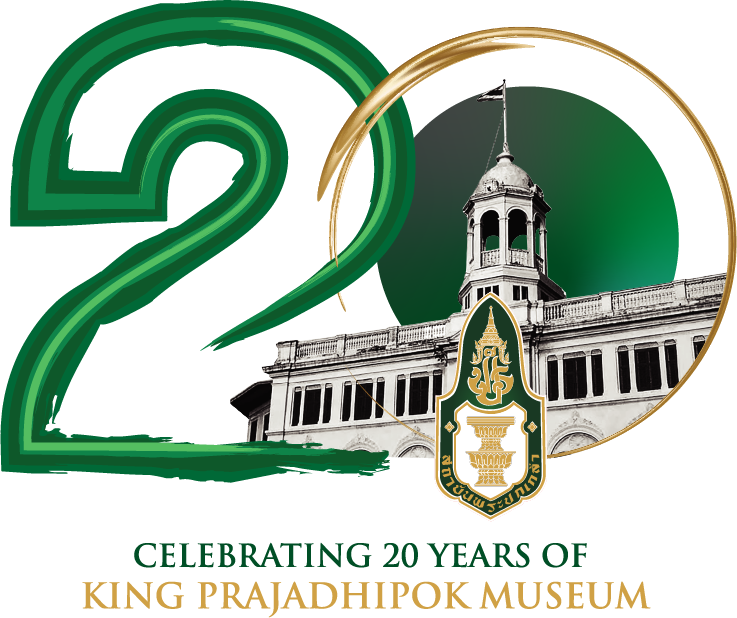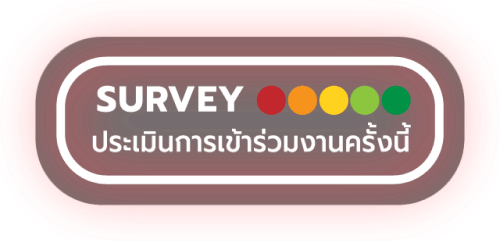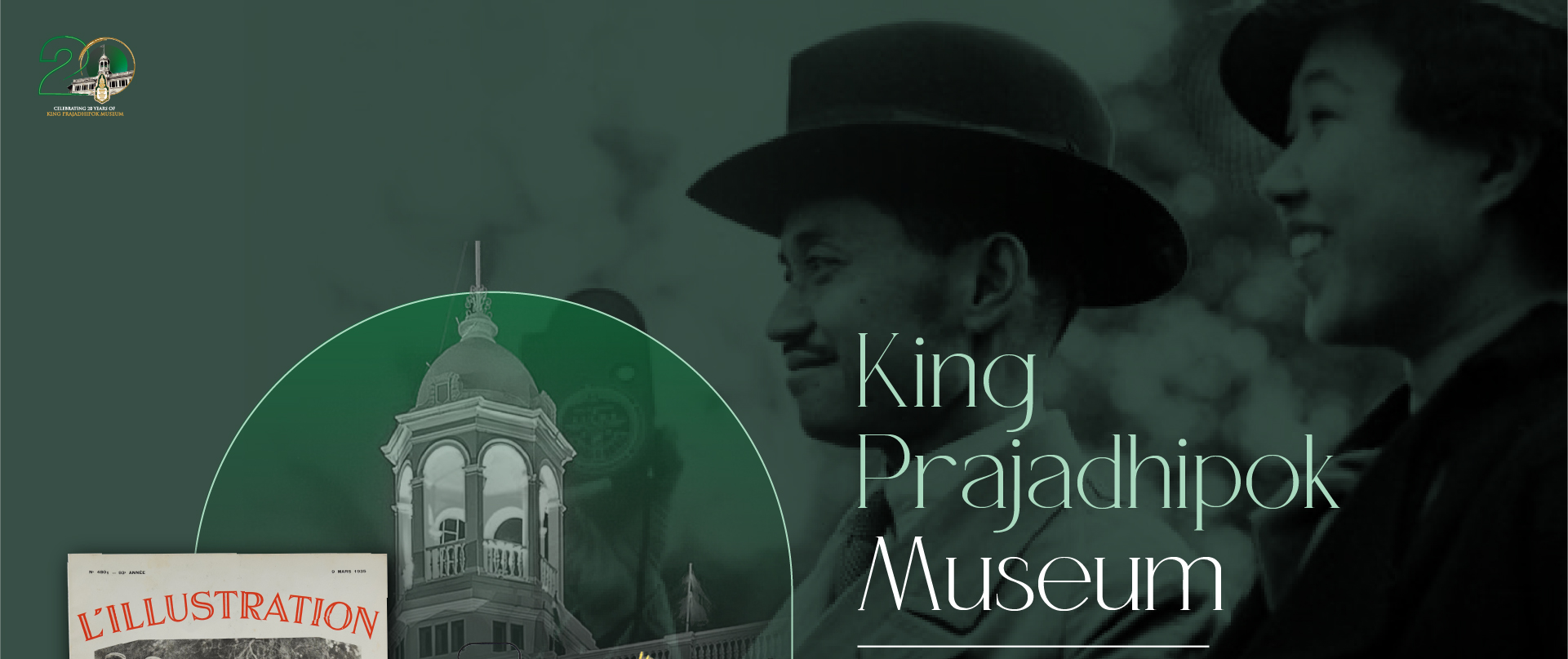
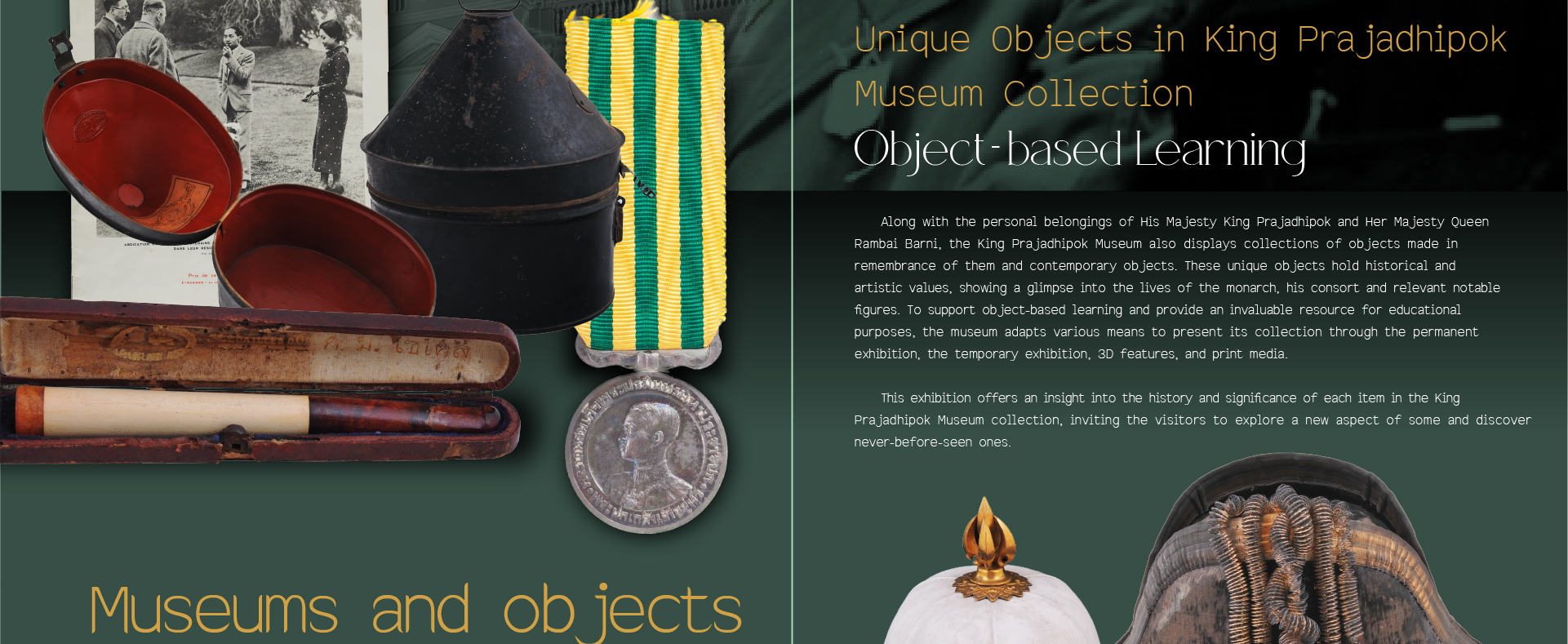
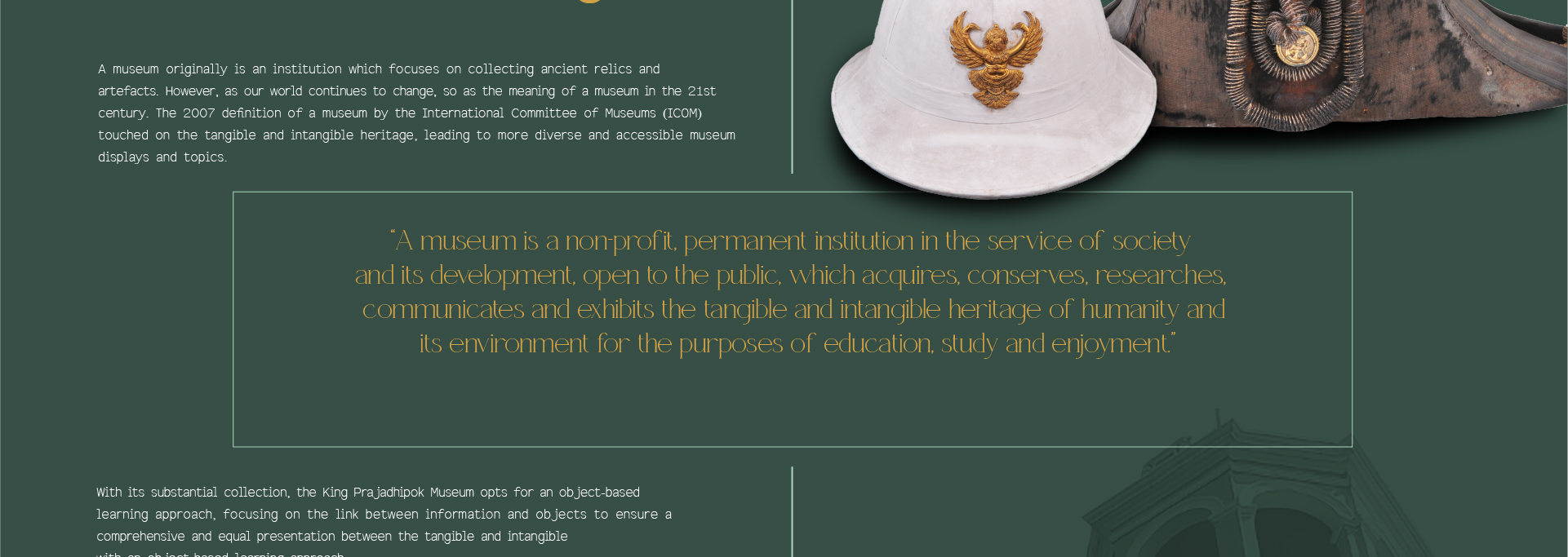
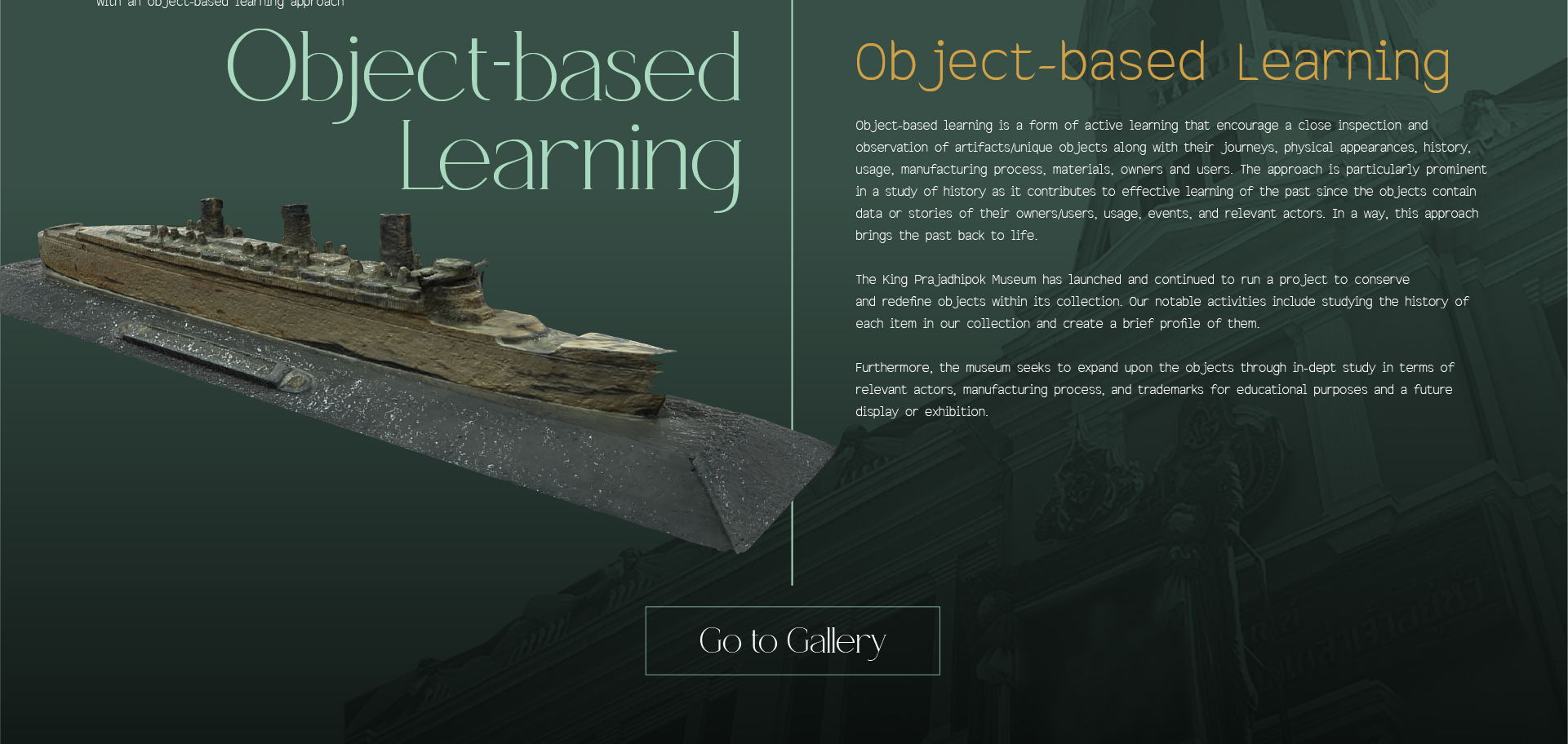

Unique Objects in
King Prajadhipok Museum Collection
Object-based Learning
Along with the personal belongings of His Majesty King Prajadhipok and Her Majesty Queen Rambai Barni, the King Prajadhipok Museum also displays collections of objects made in remembrance of them and contemporary objects. These unique objects hold historical and artistic values, showing a glimpse into the lives of the monarch, his consort and relevant notable figures. To support object-based learning and provide an invaluable resource for educational purposes, the museum adapts various means to present its collection through the permanent exhibition, the temporary exhibition, 3D features, and print media.
This exhibition offers an insight into the history and significance of each item in the King Prajadhipok Museum collection, inviting the visitors to explore a new aspect of some and discover never-before-seen ones.
Museums and objects
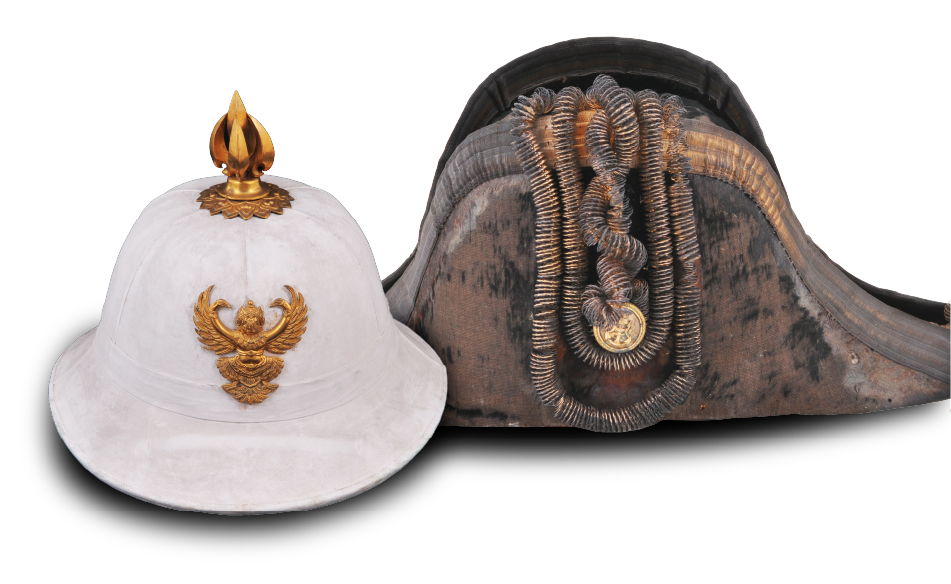
A museum originally is an institution which focuses on collecting ancient relics and artefacts. However, as our world continues to change, so as the meaning of a museum in the 21st century. The 2007 definition of a museum by the International Committee of Museums (ICOM) touched on the tangible and intangible heritage, leading to more diverse and accessible museum displays and topics.
“A museum is a non-profit, permanent institution in the service of society
and its development, open to the public, which acquires, conserves, researches,
communicates and exhibits the tangible and intangible heritage of humanity and
its environment for the purposes of education, study and enjoyment.”
With its substantial collection, the King Prajadhipok Museum opts for an object-based learning approach, focusing on the link between information and objects to ensure a comprehensive and equal presentation between the tangible and intangible with an object-based learning approach.
Object-based
Learning
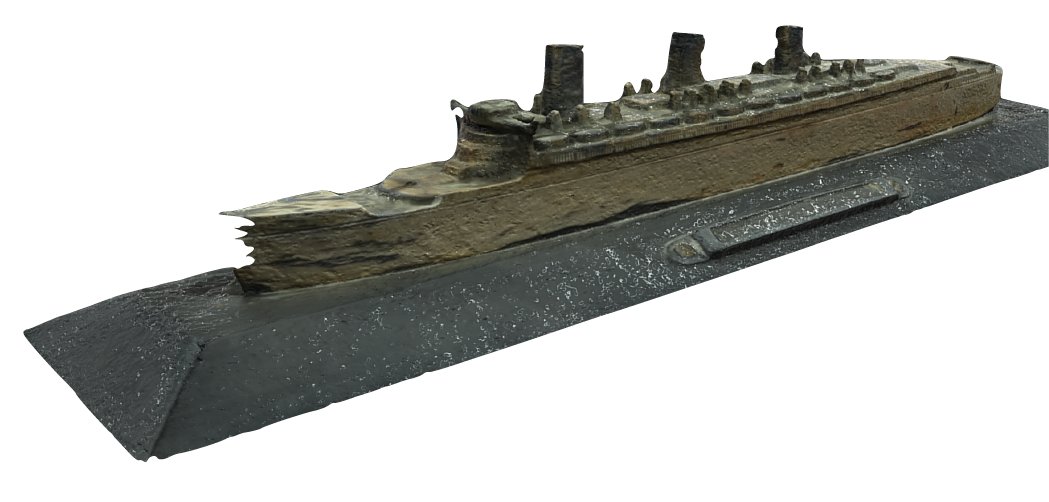
Object-based Learning
Object-based learning is a form of active learning that encourage a close inspection and observation of artifacts/unique objects along with their journeys, physical appearances, history, usage, manufacturing process, materials, owners and users. The approach is particularly prominent in a study of history as it contributes to effective learning of the past since the objects contain data or stories of their owners/users, usage, events, and relevant actors. In a way, this approach brings the past back to life.
The King Prajadhipok Museum has launched and continued to run a project to conserve and redefine objects within its collection. Our notable activities include studying the history of each item in our collection and create a brief profile of them.
Furthermore, the museum seeks to expand upon the objects through in-dept study in terms of relevant actors, manufacturing process, and trademarks for educational purposes and a future display or exhibition.
